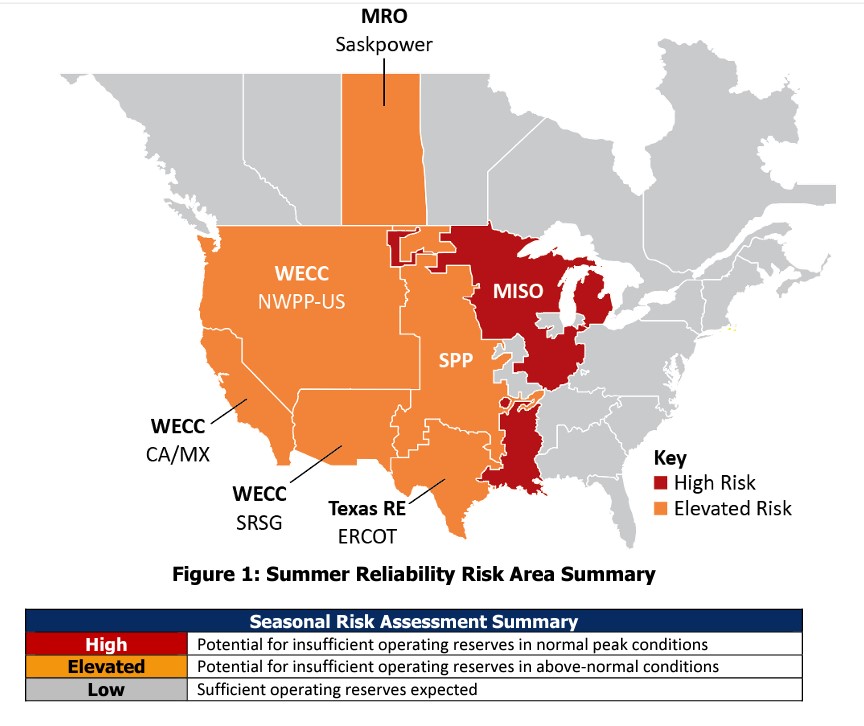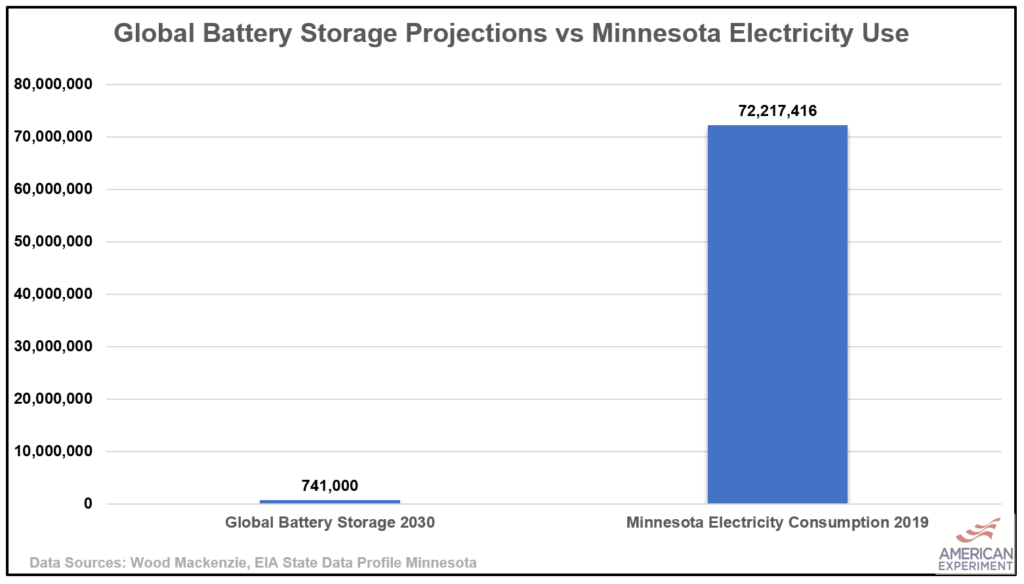Minnesota’s energy and climate needs absolutely require more nuclear power
The article below originally appeared in MinnPost. It was written by Isaac Orr
On May 31, Sen. John Marty argued in MinnPost that nuclear power is “merely a distraction” to addressing climate. This perspective could not be more wrong. Anything but nuclear is a distraction that will undermine the reliability of the electric grid and utterly fail to reduce emissions of greenhouse gases.
A recent article in the Star Tribune alerted Minnesotans to the news that our region is at greater risk of rolling blackouts this summer. In fact, a new report from the North American Electric Reliability Corporation (NERC) said that the Upper and Central Midwest, Minnesota included, has the highest risk of blackouts in the nation. Higher than California or Texas.

The NERC report states rolling blackouts are possible this summer because utility companies have closed down reliable nuclear and coal plants and attempted to replace them with unreliable, weather-dependent wind turbines and solar panels. If we have low wind conditions this summer, it could be lights out.
Electrifying transportation, home heating, or anything else will become increasingly difficult if Minnesota families have to worry about whether they will be able to charge their car when they get home. Minnesotans will also be reluctant to switch to electric heat if they are not confident that the power will be available when they need it.
Marty argues that storage technologies will cure the unreliability of wind and solar, but this idea is far less realistic than building new nuclear power plants to provide for our energy needs.
For example, nuclear power is already our largest source of electricity, and a recent analysis by Wood Mackenzie estimated there would be 741,000 megawatt hours (MWh) of battery storage installed globally by 2030. For context, federal data show Minnesota used 72 million MWh in 2019. This means the total amount of battery storage in the world would not be sufficient to power Minnesota for four days.

Arguing that we should embrace wind turbines and solar panels now in the hope of developing batteries capable of storing electricity down the road is the energy equivalent of jumping out of an airplane and hoping to invent a parachute on the way down. It is a gamble with the grid that is not worth taking, and it is totally unnecessary because we have a reliable source of carbon-free power in nuclear energy.
While America’s prowess at building new nuclear plants has atrophied due to neglect, we could begin contracting South Korean companies to build an APR 1400, a large nuclear plant which has a solid track record of construction in the United Arab Emirates (UAE).
Construction of four units in the UEA began in 2012, with the first unit entering service in early 2021. The remaining two units will soon enter service. This means it took an average of three years to build each reactor.
If Minnesota had started building one APR-1400 in 2007, when the Next Generation Energy Act was signed into law, it would likely be generating 11.4 million megawatt hours, more carbon-free electricity than was generated by the state’s entire wind fleet in 2020. And unlike wind turbines, nuclear power plants can operate at temperatures below -22°F.
If we had built 4,300 MW of nuclear, instead of wind, this new nuclear capacity would be generating 58 percent of electricity needs. Instead, the same amount of wind capacity meets just 19 percent of in-state generation.
It’s also important to note that nuclear power plants last for up to 80 years, whereas wind turbines last for 20 years, and solar panels last for 25 years. This makes nuclear power plants, once constructed, by far the most sustainable power plants on the planet.
We need to lift the moratorium and embrace new nuclear power plants for the sake of grid reliability, and to better reduce emissions. Anything else is a dangerous, and unreliable distraction.
Isaac Orr is a policy fellow specializing in energy and environmental policy at Center of the American Experiment. Follow him on Twitter @thefrackingguy